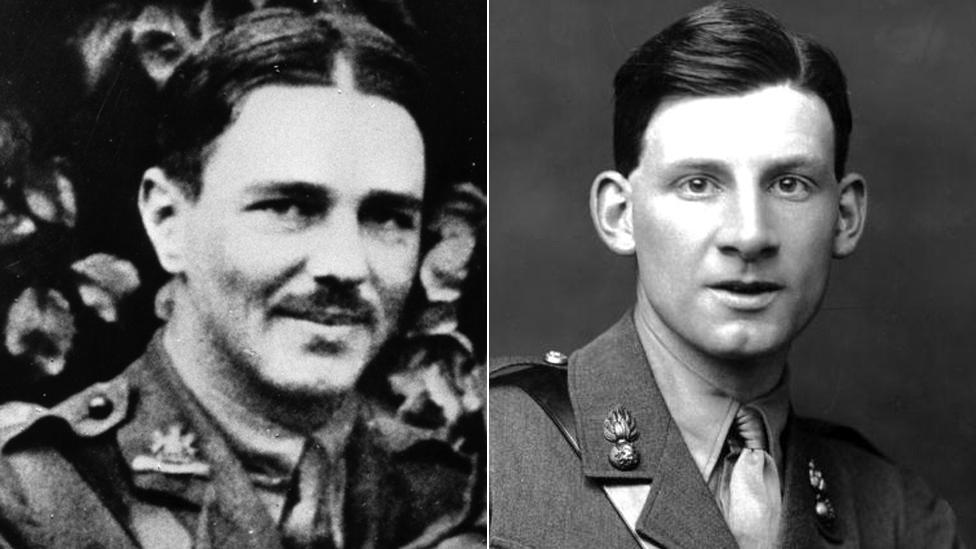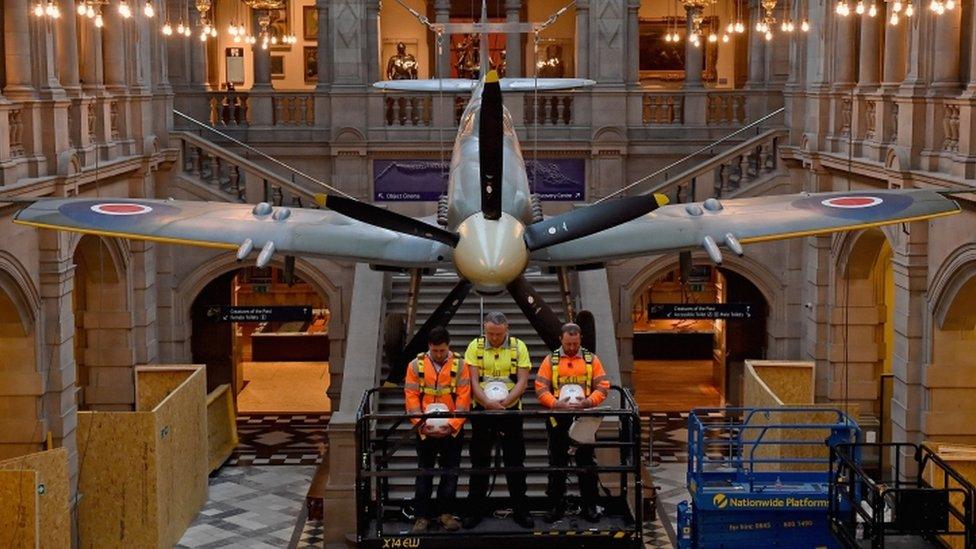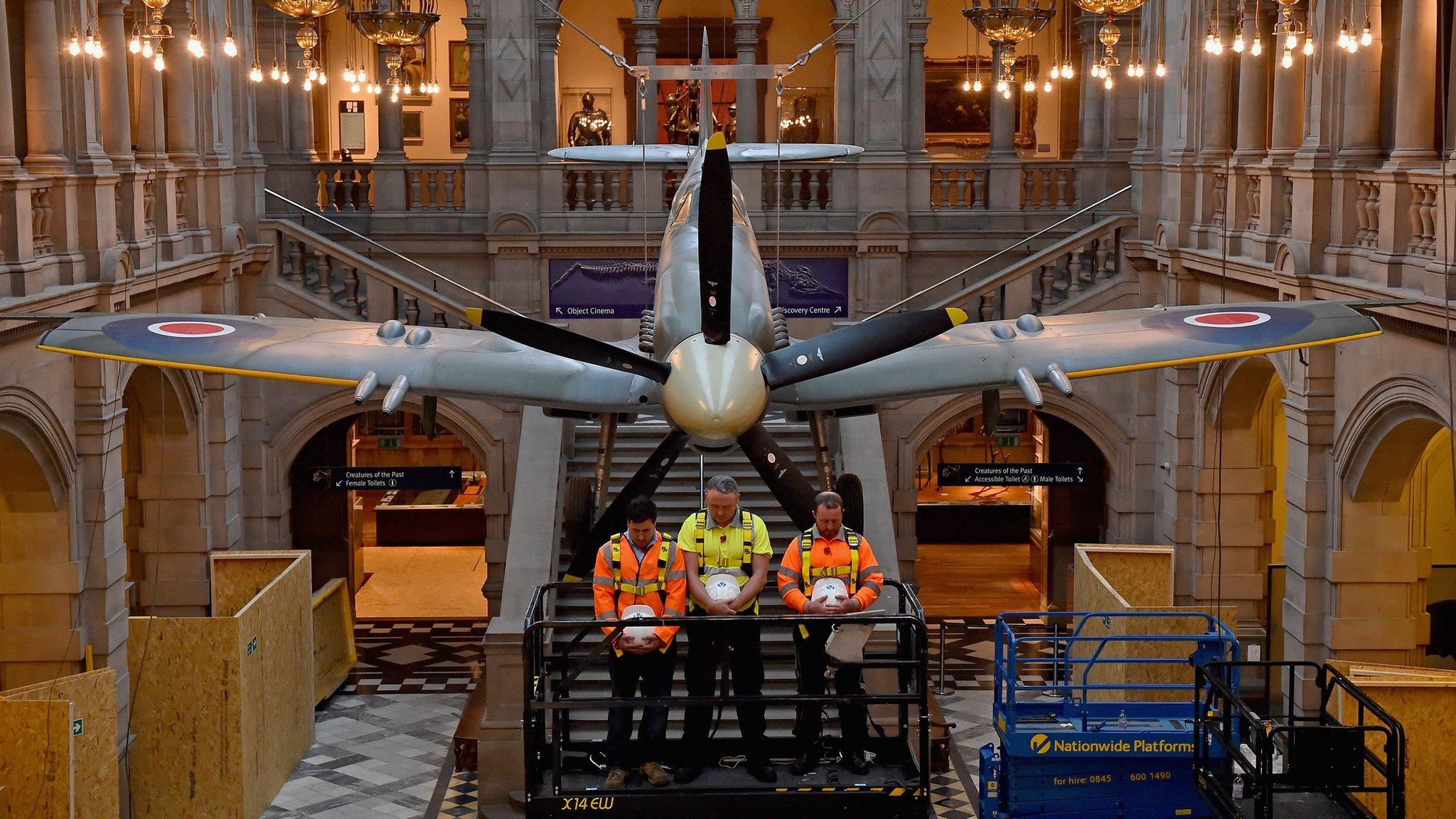On the 11th hour on the 11th day of the 11th month....
- Published

War poets Wilfred Owen and Siegfried Sassoon both stayed at Craiglockart in Edinburgh
Did you mark Remembrance Day? Did you observe two minutes silence? I did - and in rather a curious place. If you will permit me, I will tell you the story.
You may remember - although there is no reason you should - that I wrote recently on this site about Edinburgh Napier's Craiglockart campus in Edinburgh and its connection with the renowned war poets, Wilfred Owen and Siegfried Sassoon.
Today, at the eleventh hour on the eleventh day of the eleventh month, I took up an offer to examine the collection at Craiglockart associated with the poets. Along with a few university staff, I was given an intriguing insight into the period.
Bent double, like old beggars under sacks, knock-kneed, coughing like hags, we cursed through sludge."
Have you forgotten yet? Look up, and swear by the slain of the war that you'll never forget."
Just prior to the tour, I joined other staff in Craiglockart's chapel - to hear "Aftermath" by Sassoon. "Have you forgotten yet?" And "For the Fallen", by Laurence Binyon. "They shall not grow old as we that are left grow old."
And a few lines from Winston Churchill, including: "Never in the field of human conflict was so much owed by so many to so few."
Then two minutes silence, observed by all who were there, standing, heads bowed - with only the very occasional faint, distant clatter from the student refectory next door; a welcome reminder that life continues. That such indeed is the proclaimed purpose of conflict.
Then to view the collection, housed and expertly displayed in what would have been the entrance hall of the old building in the poets' day. It had been a hydropathic centre before being requisitioned to treat officers suffering from shellshock.
What I didn't know
I confess that my knowledge of the poets is relatively limited. (I read them at school but not at university.) I had known that Owen tended to defer to Sassoon when they both, briefly, overlapped in staying at Craiglockart - although, in my view, Owen ends up the finer poet.
I had known that Owen returned to the Front and was killed just before the end of World War I. I had known that Sassoon survived the war although not that he lived until 1967.
I had not known that they were at Craiglockart for different reasons. Owen arrived, visibly shaking, palpably suffering. His treatment was to engage with the ordinary, with the familiar. In his case, he was encouraged to write: he edited the hospital's magazine.

Workmen Danny Skidmore, Mark Joyce and Chaz Cooper stand under Spitfire LA198 at Kelvingrove Museum and Art Gallery during a two minute silence
By contrast, Sassoon was sent to Craiglockart after he published a protest, alleging that the war was being deliberately prolonged while the troops endured agonies. It was, as he conceded, "an act of wilful defiance of military authority."
Which might well have resulted in court martial. But Sassoon was a courageous and decorated officer - known as "Mad Jack" for his exploits - and he was despatched to Craiglockart instead. Apparently, while there, he tended to keep himself to himself, although he went out of his way to encourage his fellow poet.
Never in the field of human conflict was so much owed by so many to so few."
They shall not grow old as we that are left grow old."
The stories told us on the tour were of the mundane as well as the historic. While inconceivable horror was engulfing their comrades, the patients at Craiglockart were facing a much-defied prohibition on smoking indoors. They were supposed to take their habit outside.
I studied the hospital's "team photograph". The doctors, the matron, the nurses, the patients - or those who were well enough to pose.
It was taken on the lawn outside the hospital, now part of an extended university campus. As I left, viewing the very site of that photograph, I chanced to glance at three overseas students, standing nearby, chatting quietly and smoking peacefully.
- Published11 November 2015
